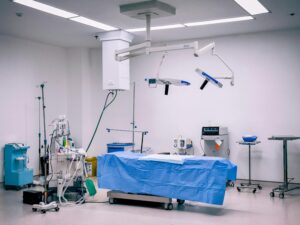Selecting a partner for Medical Device Design and Development and reverse engineering is a critical business strategic decision. This partner will act as the guardian of your intellectual property, regulatory viability, and the cornerstone of your commercial success.
A good choice will hasten your time to market, but making a mistake can result in both financial and market losses and competitive disadvantages. For this reason, knowing what key features to assess separates a strategic partnership from a simple supplier arrangement.
Regulatory-minded R&D (ISO 13485 & 21 CFR 820.30)
In the field of Medical Device Design and Development, the capabilities presented by a potential partner achieve real value. This is true when they have support from concrete documentary evidence.
Furthermore, before formalizing any collaboration, we recommend requesting and reviewing some examples or templates of these key requirements:
- Design Plan and DHF (Design History File). This design plan establishes the roadmap for your medical device, while the Design History File (DHF) demonstrates the planned development of the project.
- Requirements Traceability. This document acts as a navigation map through the project, connecting user requirements and regulations with their application in the design. It also addresses the control of potential risks that may arise.
- ISO 14971 Risk Files. This standard is mandatory for the development of medical devices. Therefore, we suggest that you request information on how they structure their risk management framework, from inception to the control plan and subsequent monitoring.
- Clear Verification/Validation Strategy. This document confirms that we have built the device as specified by the authentication specifications and that it meets the user’s requirements.
These documents are the fundamental pillars that will support the success of your project and facilitate regulatory approval.
Legally safe reverse engineering & IP hygiene
The practice of reverse engineering commonly supports the maintenance of obsolete equipment and the development of compatible products. This presents critical legal risks that require a disciplined approach.
Consequently, a partner must have up-to-date technical capabilities in the industry and know how to operate within demanding legal frameworks. Likewise, the first step is to define the permitted scope of the project in writing.
This is something that a responsible associate will ratify through a complete, mutual NDA for intellectual property protection. Similarly, an orderly disassembly procedure is decisive for creating a consistent and accurate bill of materials (BOM) for the redesign.
Besides, the partner must comprehend the measurement methods used and the systems for identifying materials. This will help them replicate or improve the properties of the original device. Finally, a partner can advise on intellectual property control points.
DfX for transfer to manufacturing (DFM/DFA/DFQ)
The transition from a functional prototype design to a consistently manufactured, quality medical device requires the integration of the DFX principle. This is true from the earliest stages of development as an indicator of well-managed medical device R&D.
A partner will demonstrate their expertise in establishing dimensional and geometric tolerances. This ensures that they are based on functional requirements and, critically, on the capability of the chosen manufacturing process, avoiding production errors.
Likewise, your partner must be able to solidly argue for the choice of techniques, such as injection molding or extrusion, for components. They must also clearly explain how the requirement for cleanroom assembly affects the design of the product’s housings and interfaces.
Manufacturers chase stability and measure it with process capability purposes (Cp/Cpk). Therefore, a clear scaling plan anticipates bottlenecks and ensures that product quality remains unchanged when transitioning from pre-series to full-scale production.

Test strategy, fixtures, and sample sizing
The verification & validation V&V phase is the test where the design demonstrates compliance with the requirements. In this case, a poorly performed test could mask serious flaws or cause costly delays in the manufacturing of medical devices.
The first required mechanism demands that pre-established V&V protocols explicitly detail each objective. This relates to the methodology and acceptance criteria because, without these, the results lack actual objective value.
Additionally, there is a test fixture design, a specialized skill that testers must master. The Design of Experiments (DOE) must guide the information gathering to ensuree it is reliable and trustworthy.
Lastly, the team must present the test value clearly in documents, directly comparing it to the acceptance criteria. They can find it in the protocol and must formulate actionable conclusions that guide their decisions.
How to select a company when looking for Medical Device Design and Development
When selecting a company, you must integrate the criteria outlined above into an assessment of the partner’s potential capabilities. Infrastructure is a crucial indicator of expertise and the ability to maintain efficient and secure partnerships in medical device design and development projects.
It should also comprise software that includes CAD/CAE tools and a Product Lifecycle Management (PLM) platform. This helps diminish errors, confirm efficiency, and address the complexity of medical device development.
Furthermore, applying an official control process that includes ECR/ECO is vital to preserving the integrity of the design. To conduct a thorough assessment, we’ll show you a dual checklist for internal use and another that demonstrates the partner’s readiness:
- Secure reverse engineering for intellectual property. In this case, the methodology should prioritize protecting your IP and that of the original device using clear protocols to prevent contamination.
- DfX for a seamless transfer to manufacturing. In this case, the stakeholder must demonstrate how the design for manufacturing (DfX) aligns with the concept to optimize the product for contract manufacturing, quality, cost, and assembly.
- Rigorous testing strategies. The idea of this test is to observe risk and have firm statistics on the entire verification and validation (V&V) process.
- Secure digital toolchains. These must have a strong, traceable, and cybersecure workflow between CAD and PLM, and must be supported by a solid IP protection NDA.
Solid documentation is the ultimate proof of a reliable partner for Medical Device Design and Development. Requiring DHF, traceability, and risk records ensures regulatory compliance. This concrete evidence safeguards your investment and ensures the success of your product in the market.






